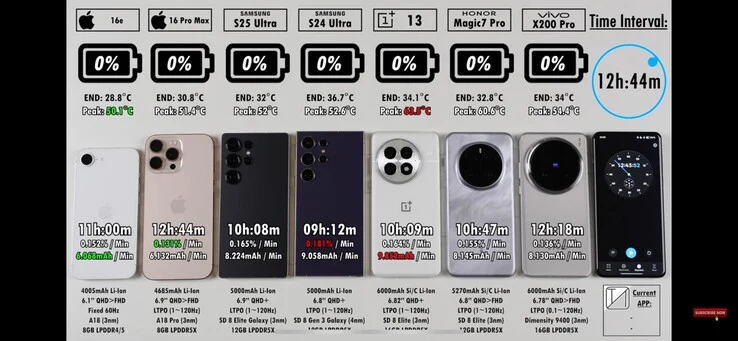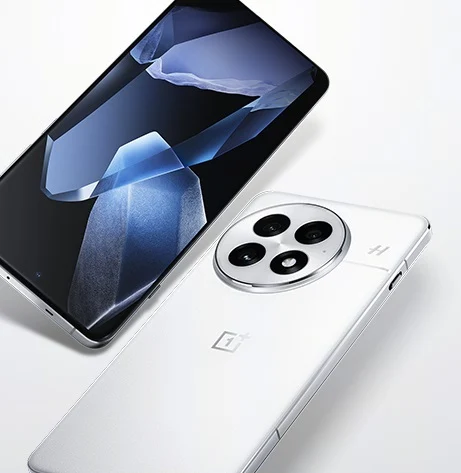Key Takeaways
1. Battery drain tests revealed the iPhone 16 Pro Max has the longest battery life at 12 hours and 44 minutes, followed by the Vivo X200 Pro and iPhone 16e.
2. The iPhone 16e is the most efficient device at 6.068mAh/min, while the Vivo X200 Pro leads among Android devices at 8.130mAh/min.
3. The OnePlus 13 exhibits significant efficiency challenges, being 20% less efficient than Snapdragon 8 Elite competitors.
4. The OnePlus 13 also suffers from poor thermal performance, reaching the highest temperature of 63.5°C during testing.
5. OnePlus plans to address these issues with the upcoming OnePlus 13T, which will feature a larger battery and improved heat management.
Equipping a smartphone with a larger battery is often seen as a sure way to boost its battery life, but the pursuit of bigger batteries may have negatively impacted efficiency. A recent battery drain test has compared various flagship smartphones currently available, shedding light on their efficiency, with the OnePlus 13 not making a favorable impression.
Testing Process and Results
In an experiment conducted by TechNick, the iPhone 16 Pro Max, Galaxy S25 Ultra, OnePlus 13, Vivo X200 Pro, among other high-end devices, were evaluated, resulting in some intriguing findings. As is typically the case, the iPhone 16 Pro Max exhibited the longest battery life in the group, lasting 12 hours and 44 minutes. The Vivo X200 Pro came in second with 12 hours and 18 minutes, while the iPhone 16e took third place, lasting precisely 11 hours.
Next in line are the Honor Magic7 Pro, followed by the OnePlus 13, Galaxy S25 Ultra, and Galaxy S24 Ultra, in that sequence. While these results establish a basic understanding of battery performance, the analysis becomes even more compelling when evaluating the battery capacities of these devices.
Efficiency Insights
The tested iPhones are clearly leading the race, demonstrating top-tier efficiency on a mAh/min basis. The iPhone 16e stands out as the most efficient, achieving 6.068mAh/min, closely trailed by the iPhone 16 Pro Max at 6.132mAh. This slight difference can likely be attributed to the 16e’s lower resolution and refresh rate display.
Among the Android devices, the Vivo X200 Pro asserts itself as the most efficient, reaching 8.130mAh/min, showcasing MediaTek’s impressive work with the Dimensity 9400. Following closely are the Snapdragon 8 Elite-driven Honor Magic7 Pro and Galaxy S25 Ultra (buy on Amazon) with 8.145mAh/min and 8.224mAh/min, respectively. Meanwhile, the OnePlus 13 lags far behind at 9.852mAh/min.
The OnePlus 13’s Challenges
These findings paint a vivid picture of the OnePlus 13’s efficiency challenges, showing it to be as much as 20% less efficient than its Snapdragon 8 Elite competitors. Moreover, the phone’s thermal performance was the poorest in the group, reaching the highest temperature of any device tested at an alarming 63.5°C. In contrast, the Galaxy S25 Ultra peaked at a much lower 52°C. This isn’t just a fluke either; we observed similar thermal issues with the OnePlus 13 in our internal tests, where inadequate thermals hindered the phone’s long-term performance.
Fortunately, OnePlus’s upcoming flagship is set to address the shortcomings of the OnePlus 13. The OnePlus 13T has been confirmed for release later this month, featuring a larger battery and improved heat management. If executed correctly, it wouldn’t be shocking to see the 13T debut with the best battery life among current-generation Android flagship devices.
Source:
Link



Leave a Reply